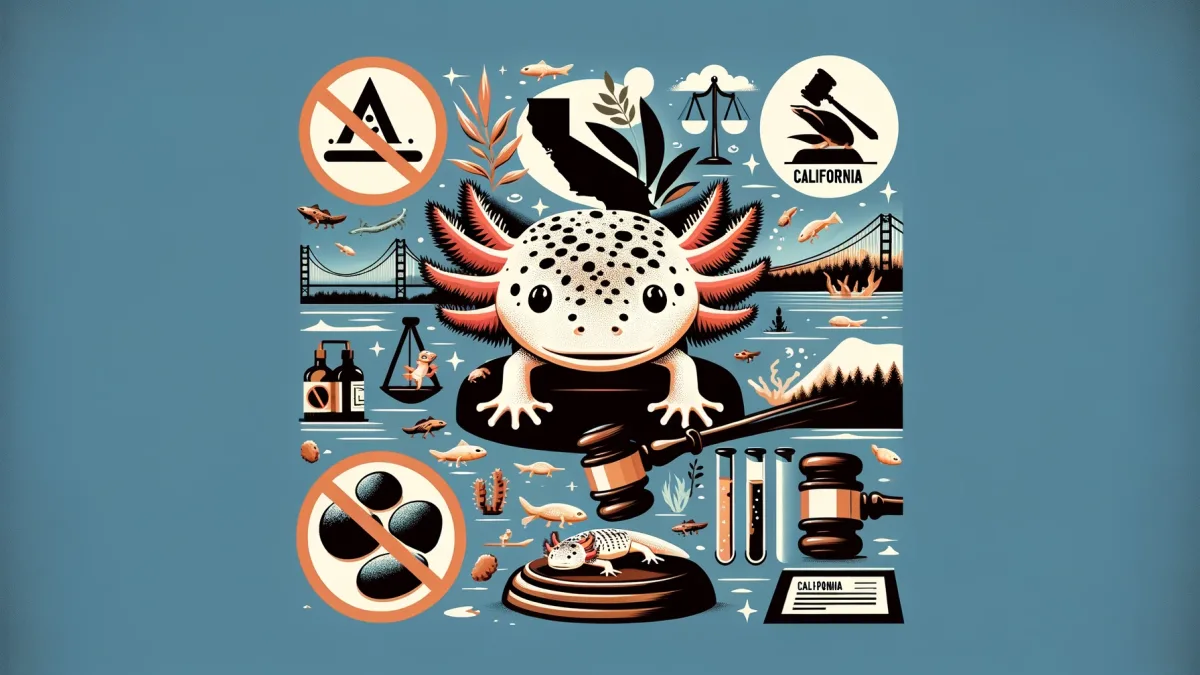Hello, fellow legal enthusiasts and curious minds! Today, we’re exploring a topic that combines the realms of environmental conservation, exotic pet ownership, and state law: Why are axolotls illegal in California? It’s a fascinating intersection of biology, legality, and ethics, so let’s delve into the details without further ado.
The Axolotl: A Brief Overview
First, a quick introduction to our subject. The axolotl (Ambystoma mexicanum) is a neotenic salamander native to the lake complex of Xochimilco near Mexico City. Known for their unique ability to regenerate lost body parts and their perpetual juvenile state, axolotls have captivated scientists and pet enthusiasts alike. However, in California, owning one of these fascinating creatures is against the law. Let’s explore why.
The Heart of the Matter: California’s Stance on Axolotls
The legal prohibition against axolotls in California primarily stems from concerns over environmental impact and the protection of local ecosystems. California’s laws regarding exotic pets are some of the strictest in the United States, designed to prevent the introduction of non-native species that could become invasive.
Keyword Spotlight: “Invasive Species”
“Invasive species” refers to non-native plants, animals, or other organisms introduced to a new environment where they do not naturally occur, often leading to significant environmental and economic damage. Invasive species can outcompete native species for resources, leading to declines or extinctions of local flora and fauna.
The California Code of Regulations
Under the California Code of Regulations, it is illegal to import, transport, or possess axolotls without a permit. The regulation aims to prevent the establishment of axolotls in California’s natural waters, where they could potentially disrupt local ecosystems and threaten native wildlife.
The Conservation Perspective
Axolotls are listed as critically endangered by the International Union for Conservation of Nature (IUCN), primarily due to habitat loss, pollution, and the introduction of invasive species in their native habitat. California’s restrictions on axolotl ownership also reflect a broader commitment to conservation and the protection of endangered species.
Potential Risks and Consequences
The primary concern is that axolotls, if released or escaped into the wild, could establish populations in California’s waterways. Their presence could threaten native species by competing for food, spreading diseases, or altering habitats. Such ecological impacts underscore the rationale behind California’s regulations.
Legal Implications for Pet Owners
For Californians passionate about exotic pets, the state’s stance on axolotls means facing potential legal consequences for owning one without proper authorization. Penalties can include fines, confiscation of the animal, and in some cases, criminal charges.
Navigating the Legal Landscape: Permits and Exceptions
While the general prohibition is clear, there are exceptions under specific circumstances, such as for research or educational purposes. Obtaining a permit from the California Department of Fish and Wildlife is a stringent process, requiring justification of the need to own or work with axolotls and a plan to prevent accidental release.
Final Thoughts: The Intersection of Law, Conservation, and Pet Ownership
The illegality of axolotls in California exemplifies the delicate balance between individual freedoms and collective responsibility towards our environment. It’s a reminder that pet ownership, especially when it comes to exotic species, carries implications beyond our homes, affecting biodiversity and ecosystems at large.
Whether you’re an aspiring axolotl owner or simply fascinated by the intersection of law and wildlife conservation, it’s clear that understanding and respecting these regulations is crucial for protecting our planet’s natural heritage.









Leave a Reply